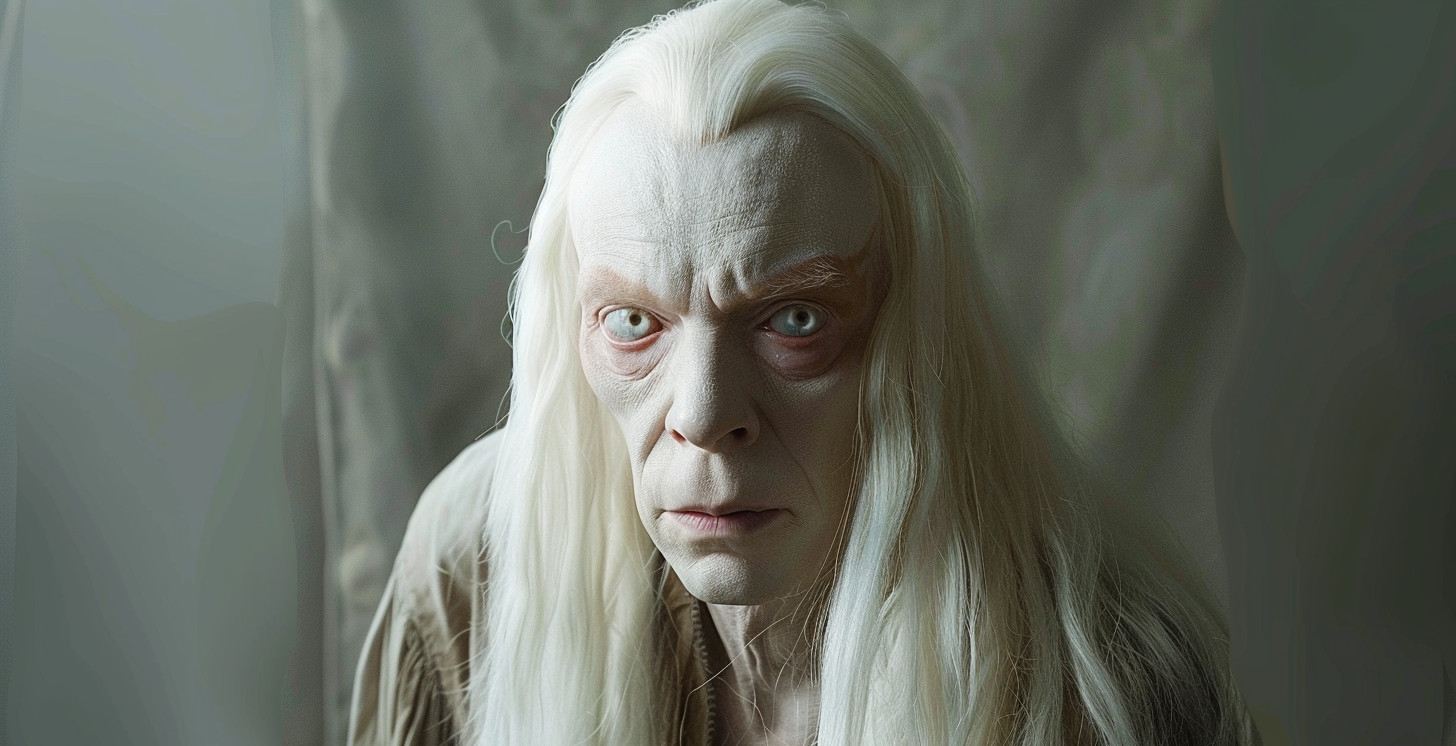The Moon-Eyed People are part of Cherokee legend. According to these tales, these people were a group of beings who lived in the Appalachian region of the United States, particularly in areas that are now part of North Carolina, Tennessee, and Georgia. The legends describe them as being hairy, having pale, white skin, large dark eyes and being sensitive to light, which is why they were called “Moon-Eyed,” because they could see better at night than during the day.
There are various interpretations and stories about the Moon-Eyed People. Some accounts suggest that they were of Welsh origin, connecting them to Prince Madoc, a figure from Welsh folklore who is said to have discovered America in the 12th century, long before Columbus. Other stories describe the Moon-Eyed People as an individual race of small, dwarf-like people who were eventually driven away from their homeland by the native Cherokee people.
The Moon-Eyed People, as described by the Cherokees, were believed to live in caves, taking refuge in the Appalachian Mountains’ natural caverns to escape the harsh sunlight that troubled their light-sensitive eyes. These subterranean dwellings provided not only protection from the sun but also a cool environment in which they could thrive. Within these caves, it’s suggested they led a nocturnal lifestyle, emerging at dusk to hunt, gather, and perhaps even engage in their own forms of agriculture under the cover of darkness. The caves served as a central hub for their community, where they could craft tools, create art, and conduct their social and cultural activities away from the prying eyes of the outside world. This unique adaptation to cave living highlights their distinctiveness in the richness of Native American folklore, painting a picture of a people deeply intertwined with the mysterious landscapes of the ancient Appalachian forests.
The Moon-Eyed People are also often associated with ancient structures found in the southeastern United States, such as the so-called “moon-eyed” stone structures in Georgia, which some speculate were built by these mysterious people. However, the true nature and existence of the Moon-Eyed People remain a subject of speculation and folklore, with no definitive archaeological evidence to confirm their historical reality.
These unique people are often depicted in folklore as having distinct physical characteristics that set them apart from the Native American tribes with whom they shared their environment. Their most defining feature, as their name suggests, was their eyes, which were described as being large and sensitive to daylight, hence their preference for nocturnal activities and dwelling in dimly lit caves. Their skin was said to be pale, much lighter than that of the native populations, contributing to their moon-related moniker. While details about their height vary across stories, some accounts suggest they were much shorter than the average human, which, combined with their other physical traits, gave them an almost mythical appearance. Beyond their physical attributes, the Moon-Eyed People are also credited with possessing advanced knowledge of construction and astronomy, as suggested by the mysterious structures and earthworks attributed to them. These accounts, though rich in cultural lore, blur the lines between history and myth, leaving a fascinating but enigmatic legacy that captivates the imagination to this day.
